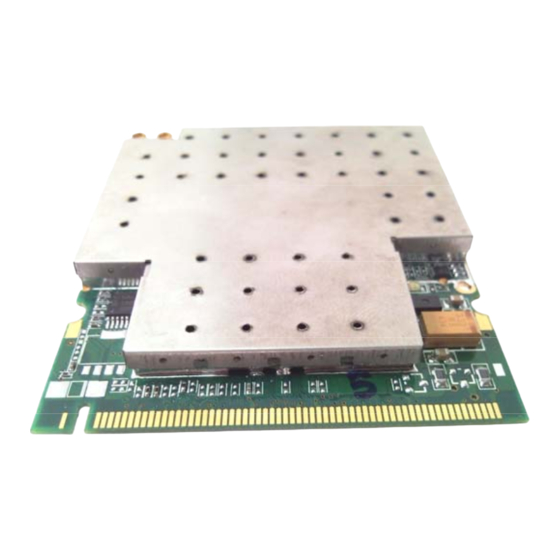
Table of Contents
Advertisement
Quick Links
Model : DLM108
Brand : Doodle Labs
DLM108 is an Industrial grade 1000 mW Tx power mini-PCI radio module. It is
designed for the ISM frequency band 902 MHz ~ 928 MHz. It sports advanced
filtering and noise reduction design techniques for high interference immunity
from the neighboring Pager transmitters.
Applications
Long Range Outdoor Broad band wireless applications
Back hauls
Access points & High Performance CPEs
Mesh Wireless Infra structure applications
Industrial applications
7 4 5 To a P a y o h Lo r on g 5 , T h e A c tu a r y , S u i te 0 4 - 0 1 , S i n ga p o r e 3 1 9 4 5 5
User Guide for OEM Integration
Advertisement
Table of Contents

Summary of Contents for Doodle Labs DLM108
- Page 1 Model : DLM108 Brand : Doodle Labs DLM108 is an Industrial grade 1000 mW Tx power mini-PCI radio module. It is designed for the ISM frequency band 902 MHz ~ 928 MHz. It sports advanced filtering and noise reduction design techniques for high interference immunity from the neighboring Pager transmitters.
- Page 2 RADIO SYSTEM INFORMATION Model No* DLM108 MAC and Baseband Atheros AR5414A Interface 32bits, 33MHz miniPCI Type III A Operation Voltage 3.3V Radio Frequency Band 902 MHz - 928 MHz Data Rates 54, 48, 36, 24, 18, 12, 9, 6 Mbps (Auto fall back)
- Page 3 Tx Power* Rx Sensitivity Tx/Rx Specification Data Rate Modulation (± 1 dBm) (± 2 dBm) 20 MHz Channel BW (FULL RATE) 1 Mbps DBPSK/DSS 30 dBm -97 dBm 912 MHz & 917 MHz 2 Mbps DQPSK/DSS 30 dBm -95 dBm 5.5 Mbps CCK/DSS 30 dBm...
- Page 4 Signal Desensitization Measurements DLM108 Operating Freq = 917 MHz, 20 MHz Channel, BPSK/COFDM Modulation Federal Communication Commission Interference Statement This equipment has been tested and found to comply with the limits for a Class B digital device, pursuant to Part 15 of the FCC Rules. These limits are designed to provide reasonable protection against harmful interference in a residential installation.
- Page 5 o Connect the equipment into an outlet on a circuit different from that to which the receiver is connected. o Consult the dealer or an experienced technician for help. FCC Caution: Any changes or modifications not expressly approved by the party responsible for compliance could void the user's authority to operate this equipment.
Need help?
Do you have a question about the DLM108 and is the answer not in the manual?
Questions and answers